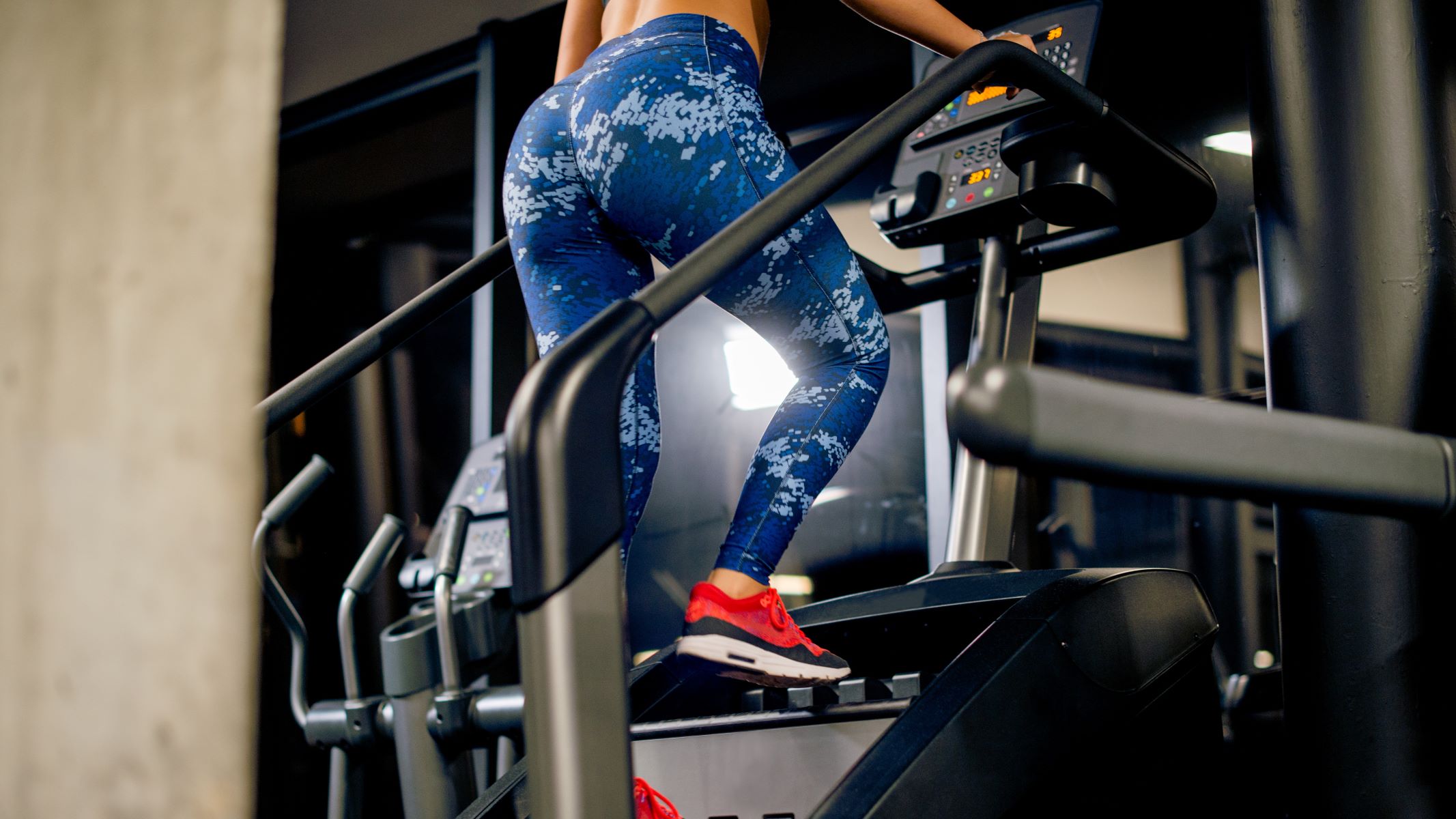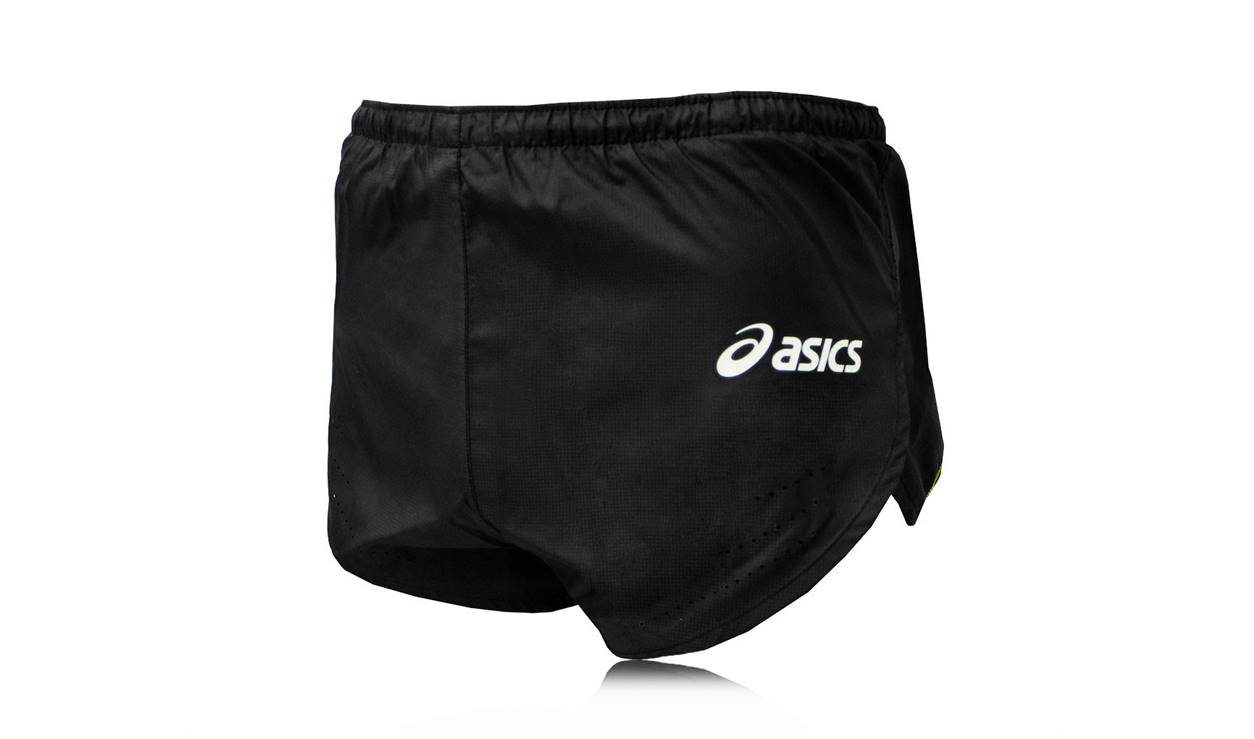

Featured
What Does The Stairmaster Workout
Modified: August 21, 2023
Find out what the Stairmaster workout is all about, and why it is a featured exercise for building endurance and burning calories.
Introduction
The Stairmaster is a popular and effective workout machine that simulates climbing stairs, offering a challenging and cardiovascular workout. It is commonly found in gyms and fitness centers due to its numerous benefits and the versatility it provides in terms of workout intensity and variety.
Using a Stairmaster can be a great way to improve your cardiovascular endurance, burn calories, and strengthen your lower body muscles. Whether you are a beginner looking to kickstart your fitness journey or an experienced athlete seeking to enhance your performance, the Stairmaster can be a valuable addition to your workout routine.
In this article, we will delve into the various benefits of the Stairmaster workout, including its ability to engage multiple muscle groups, the cardiovascular advantages it offers, and the high number of calories you can burn during a session. We will also provide tips for preparing for a Stairmaster workout, proper form and technique, safety guidelines, and ways to incorporate the Stairmaster into your fitness routine for optimal results.
So, if you’re ready to take your fitness to new heights, lace up your sneakers and let’s dive into the world of the Stairmaster workout!
Benefits of the Stairmaster Workout
The Stairmaster workout offers a multitude of benefits for individuals of all fitness levels. Here are some of the key advantages:
- Cardiovascular Endurance: The Stairmaster provides an excellent cardiovascular workout, as it elevates your heart rate and keeps it elevated throughout the duration of the exercise. This helps to improve your heart and lung function, enhancing your overall endurance and stamina.
- Lower Body Muscle Engagement: One of the primary benefits of the Stairmaster workout is its ability to engage multiple muscle groups in the lower body. With each step, your quadriceps, hamstrings, glutes, and calves are actively involved, helping to tone and strengthen these areas.
- Weight Loss and Calorie Burn: The Stairmaster is an efficient calorie-burning machine. By incorporating high-intensity interval training (HIIT) or increasing the resistance level, you can maximize your calorie burn and accelerate weight loss. It has been estimated that an hour of Stairmaster exercise can burn between 500-700 calories.
- Low-Impact Workout: Unlike running or other high-impact exercises, the Stairmaster provides a low-impact workout option that is easier on the joints. This makes it an ideal choice for individuals with joint conditions or those who prefer lower-impact activities.
- Improved Balance and Coordination: As you climb the stairs on the Stairmaster, you need to maintain balance and coordination. This helps to strengthen your core muscles and improve overall stability, which can translate to better performance in daily activities and reduce the risk of falls.
- Mental and Emotional Well-being: The Stairmaster workout not only benefits your physical health but also has positive effects on your mental and emotional well-being. Engaging in regular exercise releases endorphins, which are natural mood boosters, helping to reduce stress, anxiety, and depression.
Incorporating the Stairmaster into your fitness routine can provide numerous advantages for your overall health and fitness. So, take a step towards a stronger, fitter, and healthier you by embracing the benefits of the Stairmaster workout!
Muscles Engaged during the Stairmaster Workout
The Stairmaster workout primarily targets the muscles in your lower body, but it also engages other muscle groups to a certain degree. Here are the main muscles involved during a Stairmaster workout:
- Quadriceps: The quadriceps, located in the front of your thighs, are actively engaged as you push down on the pedals. This muscle group is responsible for extending your knee and providing power during the upward movement on the Stairmaster.
- Hamstrings: The hamstrings, located at the back of your thighs, are involved during the downward phase of the movement. They help to control the descent and provide stability, preventing your lower body from collapsing.
- Glutes: The glute muscles, including the gluteus maximus, medius, and minimus, are heavily recruited during the Stairmaster workout. They are responsible for extending the hips, providing power, and maintaining balance throughout the exercise.
- Calves: The calf muscles, specifically the gastrocnemius and soleus, play a crucial role during the Stairmaster workout. They help to push off the pedals, propelling your body upward, and control the landing during descent.
- Core Muscles: Your core muscles, including the abdominals and back muscles, are engaged to stabilize your torso and maintain proper posture while climbing the stairs. This helps to improve your overall balance and stability.
- Hip Flexors: The hip flexor muscles, including the iliopsoas and rectus femoris, are activated during the Stairmaster workout. These muscles assist in lifting your leg and bending your hip to achieve the climbing motion.
- Upper Body: While the primary focus of the Stairmaster workout is on the lower body, your upper body also plays a role in maintaining balance and coordination. The muscles in your arms, shoulders, and upper back are engaged to a lesser extent as you maintain a steady rhythm and proper posture.
By engaging these muscle groups during the Stairmaster workout, you can tone and strengthen your lower body, improve your balance and stability, and enhance your overall athletic performance.
Keep in mind that the intensity of muscle engagement can vary depending on your form, resistance level, and speed on the Stairmaster. It is essential to maintain proper technique and gradually increase the intensity of your workouts to maximize the benefits and avoid muscle imbalances or injuries.
Cardiovascular Benefits of the Stairmaster Workout
The Stairmaster workout offers significant cardiovascular benefits, making it an excellent choice for improving your cardiovascular fitness and endurance. Here are some of the key advantages:
- Elevated Heart Rate: When using the Stairmaster, you continuously climb steps, which elevates your heart rate. This sustained increase in heart rate helps to strengthen your heart muscles, improve blood circulation, and enhance overall cardiovascular function.
- Improved Oxygen Consumption: The Stairmaster workout requires your body to consume more oxygen to meet the increased energy demands. Over time, this leads to improved oxygen uptake and utilization by your muscles, enhancing your endurance levels.
- Increased Lung Capacity: The Stairmaster workout involves deep breathing and increased lung activity, which can enhance your lung capacity. This allows you to take in more oxygen and expel carbon dioxide more efficiently, improving respiratory function.
- Burns Body Fat: Engaging in a Stairmaster workout accelerates fat burning due to its high-intensity nature. As your heart rate increases, your body taps into its fat stores for energy, helping to reduce body fat and promote weight loss.
- Intense Interval Training: The Stairmaster can be effective for interval training, where you alternate between periods of high intensity and recovery. This type of training is known to boost cardiovascular fitness and improve the efficiency of your heart and lungs.
- Lower Risk of Cardiovascular Diseases: Regular cardiovascular exercise, such as the Stairmaster workout, can help lower the risk of cardiovascular diseases. It can reduce blood pressure, improve cholesterol levels, and enhance overall heart health.
By incorporating the Stairmaster into your fitness routine, you can reap the many cardiovascular benefits it offers. Aim for at least 30 minutes of moderate-to-vigorous intensity Stairmaster workouts several times a week to experience noticeable improvements in your cardiovascular fitness.
Remember to consult with your healthcare professional before starting any new exercise regimen, especially if you have any pre-existing medical conditions or concerns.
Calories Burned on the Stairmaster
The Stairmaster is a highly effective calorie-burning machine that can help you achieve your weight loss goals. The number of calories burned during a Stairmaster workout depends on various factors, including your body weight, intensity level, duration of the workout, and your individual fitness level.
On average, a 150-pound person can burn approximately 400-500 calories per hour on the Stairmaster. However, if you increase the intensity or duration of your workout, you can significantly increase the calorie burn. For example, incorporating high-intensity interval training (HIIT) or increasing the resistance level can elevate your heart rate and boost your calorie burn even further.
It is important to note that the number of calories burned during a Stairmaster workout can vary from person to person. Factors such as age, gender, metabolism, and individual effort level all play a role. However, using the Stairmaster consistently and challenging yourself with higher resistance or longer workouts can help create a calorie deficit, which is essential for weight loss.
To monitor your calorie burn, you can use fitness tracking devices, heart rate monitors, or even the built-in calorie tracking features on the Stairmaster machine. These tools can provide you with a more accurate estimate of the calories burned during your workouts.
Remember, achieving weight loss and burning calories is not solely dependent on the Stairmaster workout. It is essential to maintain a balanced and healthy diet, along with incorporating other forms of physical activity and strength training exercises, for optimal results.
Whether you’re looking to shed excess pounds or maintain a healthy weight, the Stairmaster can be an effective tool to help you reach your goals. So, step up your calorie-burning game and make the most of your Stairmaster workouts!
Preparing for a Stairmaster Workout
Before hopping onto the Stairmaster and starting your workout, it is important to properly prepare yourself to ensure a safe and effective session. Here are some tips to help you get ready for a Stairmaster workout:
- Proper Attire: Wear comfortable workout attire that allows for a full range of motion. Choose supportive, well-fitting athletic shoes with good traction to avoid slipping on the pedals.
- Warm-Up: Start with a light warm-up to prepare your body for the workout. Perform dynamic stretches or a few minutes of light cardio to increase your heart rate and loosen up your muscles.
- Hydration: Drink water to hydrate your body before and during your workout. Staying properly hydrated is important for optimal performance and to prevent dehydration.
- Adjust the Equipment: Set the Stairmaster to a comfortable level of resistance that suits your fitness level. Adjust the handrails if needed, ensuring they are positioned at a height that allows for proper balance and support.
- Start Slow: If you are new to the Stairmaster or haven’t used it in a while, start at a slower pace and gradually increase the intensity. Focus on maintaining proper form and technique throughout the workout.
- Listen to Your Body: Pay attention to how your body feels during the workout. If you experience any pain or discomfort, stop and take a break. Pushing through pain can lead to injuries.
- Cool Down: After your Stairmaster workout, take a few minutes to cool down. Slowly decrease the intensity and end with static stretching to help your muscles relax and prevent any post-workout soreness.
By following these preparation tips, you can ensure a safer and more enjoyable Stairmaster workout experience. Remember, it’s important to listen to your body, take breaks when needed, and gradually increase the intensity of your workouts as you progress.
Now that you’re ready to conquer the stairs, let’s move on to learning the proper form and technique for a successful Stairmaster workout!
Proper Form and Technique on the Stairmaster
Maintaining proper form and technique on the Stairmaster is crucial for an effective and safe workout. Follow these guidelines to ensure you’re getting the most out of your Stairmaster sessions:
- Posture: Stand upright with a tall spine, shoulders relaxed, and core engaged. Avoid leaning too far forward or backward, as this can compromise your balance and increase the risk of injury.
- Foot Placement: Place your entire foot on the pedals, ensuring that your feet are secure and stable. Avoid putting too much weight on your toes or heels. Distribute your weight evenly to maintain balance.
- Step Motion: Push down firmly on the pedals as you climb, using your entire foot to generate the movement. Avoid bouncing or stomping your feet, and maintain a smooth and controlled step motion.
- Range of Motion: Strive for a full range of motion with each step. Bend your knees as you descend and fully extend your legs as you ascend. This ensures that you are engaging the targeted muscles and maximizing the effectiveness of the workout.
- Core Engagement: Keep your core muscles engaged throughout the workout. This helps to stabilize your torso and maintain proper form. Avoid hunching forward or slumping backward as you climb.
- Hand Placement: Hold onto the handrails lightly for balance, but try not to lean on them excessively. They are there to assist you, but the focus should be on using your lower body muscles to propel yourself.
- Breathing: Breathe deeply and rhythmically throughout the workout. Inhale as you descend and exhale as you ascend. Proper breathing helps to increase oxygen flow to your muscles and supports your overall endurance.
- Gradual Progression: Start with a comfortable pace and gradually increase the intensity of your Stairmaster workouts. This allows your body to adapt and prevents overexertion or muscle fatigue.
Remember, it is important to listen to your body and adjust the Stairmaster settings according to your fitness level. If you experience any pain or discomfort, decrease the intensity or stop the workout. Consistency, proper form, and gradual progression are key to achieving the best results on the Stairmaster.
Now that you have the proper form and technique down, let’s explore some variations and challenges you can incorporate into your Stairmaster workouts!
Stairmaster Workout Variations and Challenges
The Stairmaster offers a versatile platform for a variety of workout variations and challenges to keep your routine engaging and effective. Here are some ideas to spice up your Stairmaster workouts:
- Interval Training: Incorporate high-intensity interval training (HIIT) into your Stairmaster workout routine. Alternate between short bursts of intense climbing and active recovery periods to challenge your cardiovascular system and burn more calories.
- Reverse Climbing: Instead of climbing forward, try climbing in reverse on the Stairmaster. This variation targets different muscle groups in your lower body, particularly your glutes and hamstrings, and adds an extra challenge to your workout.
- Side Steps: Step sideways on the Stairmaster, alternating your leading foot with each step. This lateral movement targets your inner and outer thighs and adds variety to your workout routine.
- Single Leg Workout: Challenge your balance and strength by performing the Stairmaster workout using only one leg at a time. Alternate between legs or dedicate a full workout session to single-leg climbing to further engage your stabilizer muscles and improve overall balance.
- Stair Intervals: Vary the intensity of your workout by adjusting the resistance level or speed at specific intervals. For example, climb at a higher resistance or faster speed for one minute, then lower the intensity for the next minute. This alternating pattern keeps your body guessing and pushes your limits.
- Weighted Vest: Add extra resistance by wearing a weighted vest during your Stairmaster workouts. This increases the intensity and helps to build strength and endurance in your lower body.
- Cross-Training: Combine the Stairmaster with other forms of cardio, such as cycling or rowing, to create a cross-training workout. Alternate between different machines or switch between exercises within a single session to work different muscle groups and keep your workout routine diversified.
- Challenge Yourself: Set personal goals and challenge yourself to climb a certain number of floors or to achieve a specific time or distance. This helps to keep you motivated and provides a sense of accomplishment as you progress.
By incorporating these variations and challenges into your Stairmaster workouts, you can prevent boredom, break through plateaus, and continuously challenge your body in new ways. Remember to always maintain proper form and technique while completing these exercises to avoid injury.
Now that you have some ideas for different Stairmaster workout variations, let’s explore some important safety tips to ensure you can enjoy your workouts without any mishaps.
Safety Tips for Using the Stairmaster
While the Stairmaster can provide an effective and challenging workout, it’s essential to prioritize safety to avoid any injuries or accidents. Here are some safety tips to keep in mind when using the Stairmaster:
- Start Slowly: If you’re new to the Stairmaster or returning after a break, start with a lower intensity and gradually increase the difficulty over time. This allows your body to adapt and reduces the risk of muscle strains or injuries.
- Warm-Up and Cool Down: Always start your Stairmaster workout with a proper warm-up to prepare your muscles and joints. Likewise, finish with a cool-down and stretching routine to help your body recover and prevent post-workout soreness.
- Use Proper Form: Maintain proper form and technique throughout your Stairmaster workout. Watch your posture, engage your core, and ensure that your feet are secure on the pedals. Avoid excessive leaning on the handrails, as it can compromise your balance and posture.
- Set Realistic Goals: It’s important to set realistic goals and progress at your own pace. Don’t push yourself too hard or compare your progress to others. Listen to your body and take breaks when needed.
- Stay Hydrated: Drink water before, during, and after your Stairmaster workout to stay hydrated. Dehydration can affect your performance and overall well-being, so be sure to have a water bottle nearby to sip on as needed.
- Pay Attention to Your Body: Be mindful of how your body feels during the workout. If you experience dizziness, chest pain, or shortness of breath, stop the exercise immediately and seek medical attention if necessary.
- Use Caution with Injuries or Conditions: If you have any pre-existing injuries, joint problems, or medical conditions, consult with a healthcare professional before using the Stairmaster. They can provide guidance on any modifications or precautions you may need to take.
- Keep the Area Clear: Ensure that the area around the Stairmaster is clear of any objects or obstructions that may pose a tripping or falling hazard. This creates a safe exercise environment and reduces the risk of accidents.
- Regular Maintenance: Check the Stairmaster for any signs of wear and tear, such as loose parts or malfunctioning sensors. Report any issues to the gym staff or equipment maintenance personnel to ensure the machine is in proper working condition.
- Know Your Limits: While it’s important to challenge yourself, it’s equally important to know your limits. Pushing too hard or ignoring signs of fatigue can lead to injuries. Listen to your body and give yourself adequate rest and recovery time.
By following these safety tips, you can have a safe and enjoyable Stairmaster workout experience. Remember that your well-being comes first, so always prioritize safety over intensity.
Now that you’re equipped with safety knowledge, let’s explore how you can incorporate the Stairmaster into your overall fitness routine for optimal results.
Incorporating the Stairmaster into Your Fitness Routine
The Stairmaster can be a valuable addition to your fitness routine, offering a challenging and effective workout. Here are some tips on how to incorporate the Stairmaster into your overall fitness regimen:
- Set Specific Goals: Determine what you want to achieve with the Stairmaster workout. Whether it’s improving cardiovascular fitness, burning calories, or toning your lower body muscles, having specific goals will help you stay focused and motivated.
- Plan Your Workouts: Schedule dedicated Stairmaster workouts into your weekly schedule. Aim for at least two to three sessions per week, allowing for a day or two of rest between workouts to give your muscles time to recover and repair.
- Combine with Strength Training: Pair the Stairmaster with strength training exercises to create a well-rounded fitness routine. Incorporate exercises that target the upper body, core, and other major muscle groups to achieve overall strength and balance.
- Create Interval Workouts: Use the Stairmaster for interval training by alternating between periods of high intensity and recovery. This can increase calorie burn, boost cardiovascular fitness, and challenge your body in different ways.
- Track Your Progress: Keep a record of your Stairmaster workouts to track your progress. Note the duration, intensity, and any milestones you achieve. This can help you stay motivated and monitor your improvements over time.
- Mix Up Your Workouts: Avoid getting into a workout plateau by adding variety to your Stairmaster workouts. Utilize different workout variations, challenges, and intensity levels to keep your body guessing and prevent boredom.
- Listen to Your Body: Pay attention to how your body feels. If you’re fatigued or experiencing muscle soreness, take a rest day or engage in lighter exercise. Give yourself time to recover and prevent overtraining.
- Enjoy Cross-Training: Incorporate other forms of cardiovascular exercise, such as cycling, swimming, or running, to complement your Stairmaster workouts. Cross-training helps to work different muscle groups, prevent overuse injuries, and keep your fitness routine engaging.
- Seek Professional Guidance: If you’re new to the Stairmaster or need help designing an effective fitness routine, consider consulting with a personal trainer or fitness professional. They can provide guidance, offer personalized workouts, and ensure you’re using proper form and technique.
- Maintain a Balanced Diet: Remember that exercise is just one component of a healthy lifestyle. Fuel your body with nutritious foods, stay hydrated, and get sufficient rest to support your workouts and optimize your results.
By incorporating the Stairmaster into your fitness routine and adopting these practices, you can achieve a well-rounded workout, improve your cardiovascular fitness, strengthen your muscles, and work towards reaching your fitness goals.
Now that you have a comprehensive understanding of the benefits, techniques, and safety measures associated with the Stairmaster workout, it’s time to lace up your shoes, step onto the machine, and take your fitness to new heights!
Conclusion
The Stairmaster workout is a fantastic way to improve your cardiovascular fitness, burn calories, and strengthen the muscles in your lower body. With its versatility and ability to engage multiple muscle groups, the Stairmaster offers a challenging and effective workout for individuals of all fitness levels.
Through the Stairmaster workout, you can elevate your heart rate, improve your cardiovascular endurance, and enhance your lung capacity. By engaging muscles such as the quadriceps, hamstrings, glutes, and calves, you can tone and strengthen your lower body. Additionally, the Stairmaster provides a low-impact option for those with joint conditions or those who prefer lower-impact activities.
Incorporating the Stairmaster into your fitness routine allows you to experience various benefits. Whether you aim to lose weight, improve your overall fitness, or enhance your athletic performance, the Stairmaster can be a valuable tool in helping you achieve your goals.
Remember to always prioritize safety during your Stairmaster workouts by maintaining proper form and technique, starting slowly, and listening to your body. By following safety guidelines and gradually increasing the intensity and duration of your workouts, you can minimize the risk of injuries and ensure a safe exercise experience.
Incorporate variations and challenges into your Stairmaster workouts to keep them engaging and prevent boredom. Utilize interval training, reverse climbing, side steps, and single-leg workouts to target different muscle groups and add variety to your routine.
Lastly, make the Stairmaster workout a part of your overall fitness routine by setting specific goals, tracking your progress, and combining it with strength training and cross-training exercises. Remember to listen to your body, stay hydrated, and fuel yourself with a balanced diet.
So, step up to the challenge and embrace the benefits of the Stairmaster workout. With dedication, proper technique, and a bit of motivation, you can reach new heights in your fitness journey!





